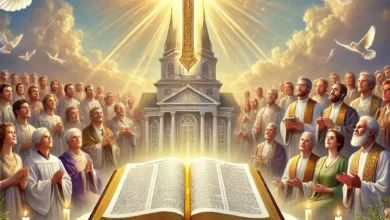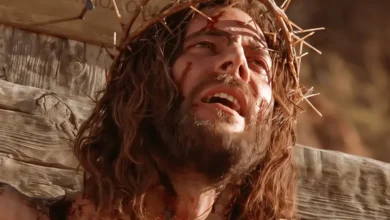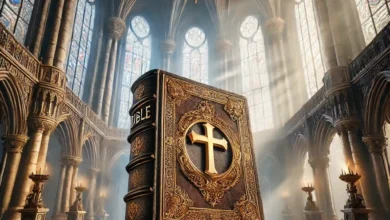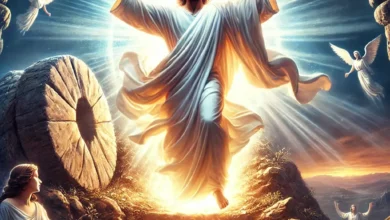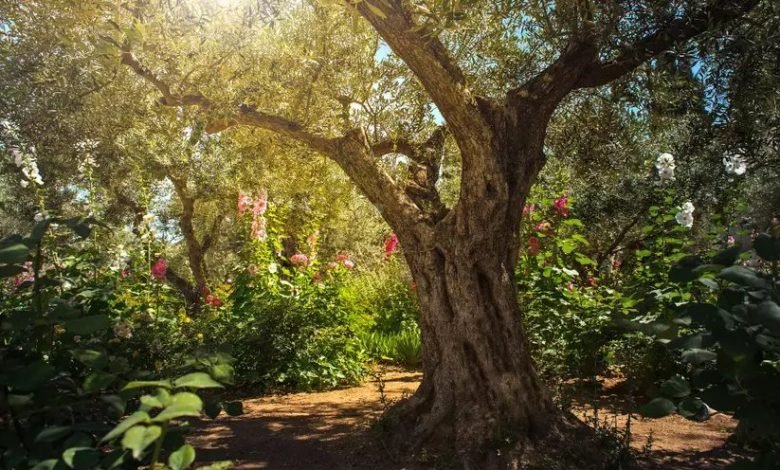
What was the Garden of Gethsemane? What Did Jesus Pray?
The sorrow that Jesus experienced in the Garden of Gethsemane on Holy Thursday, the last night before his crucifixion, seems to have been the culmination of all the sorrows he had ever experienced. This time in Gethsemane, next to the cross itself, was the most difficult moment of his life. In this text, we will discuss the meaning of Gethsemane, its importance, its location and also the prayer that Jesus prayed there while waiting for the cross.
What is the meaning of “Gethsemane”?
Gethsemane, meaning “olive oil press”, is a garden of olive trees at the foot of the Mount of Olives. The Garden of Gethsemane is mentioned in the Old Testament and the New Testament, which is of historical and theological importance at the time of Jesus Christ and today.
Geographical location of the Garden of Gethsemane
Referring to biblical sources and the geographical location of Gethsemane, Jessica Brody explains:
While the exact location is difficult to determine, the Bible indicates that the Garden of Gethsemane was located on the Mount of Olives, a historical place with deep meaning throughout the Bible. As stated in Acts 1:12, the Mount of Olives was “a walk on the Sabbath day from the city.” Easton’s 1897 Bible Dictionary tells us that the Mount of Olives was so named because it was covered with olive trees. This mountain, which is about 200 feet above sea level, was one of several mountain ranges east of Jerusalem and offered a good view of the city. The Yehuda Valley lies between the mountain and Jerusalem, and the entire area was a place that Jesus often visited on his travels throughout the Gospels.
Mount Olivet is an important place; King Solomon built a “high place” there to worship foreign gods, which caused God’s anger against him (1 Kings 7-11). After his son Absalom rebelled with a rebellion, King David and his followers fled weeping and barefoot from the Yehuda valley towards the Mount of Olives (2 Samuel 15:13-30). The Old Testament prophet Zechariah prophesied that “a day will come from God” when God will stand on the Mount of Olives and prepare for battle and will reign over the whole earth (Zechariah 14:1-9).
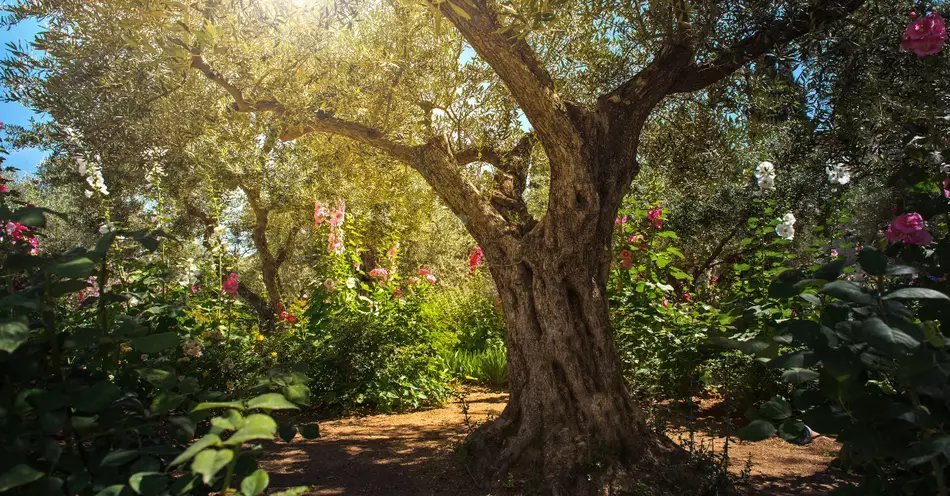
Garden of Gethsemane today
The exact location of Gethsemane is still debated. Dr. Thomson (Land and Bible) says:
“When I first came to Jerusalem, and for many years afterwards, this plot of land was open to all whenever anyone wanted to come and meditate under its very old olive trees. The Latins, however, have of late years succeeded in obtaining full possession of it, and have built a high wall round it… The Greeks have built another place a little to the north of it… My own opinion is that both are wrong. This position is so near the town, and so near what must always have been the main road to the east, that it is unlikely that our Lord chose it for the retreat of that perilous and gloomy night…. I tend to the garden. In the lonely valley, I will place a few hundred people northeast of the current Gethsemane. (excerpt from Easton’s Bible Dictionary)
Some have accepted the garden that is today at the foot of the Mount of Olives in the east of Jerusalem as the Garden of Gethsemane mentioned in the Gospels. That garden is still preserved, and many of the ancient olive trees that grow there are descendants of the trees that existed in Jesus’ time. It includes the Church of All Nations, also known as the Church of Doom, which was built on part of the garden in the early 20th century. Visitors to the Garden of Gethsemane can explore the peaceful surroundings, meditate and reflect on the events that took place there on the night Jesus was betrayed.
Jesus’ prayer in Gethsemane
Then Jesus went with them to a place called Gethsemane and said to his disciples, “Sit here while I go over there and pray.” And he took Peter and the two sons of Zebedee with him and began to be sad and anxious. Then he said to them, “My soul is very sorrowful, even unto death; “Stay here and stay awake with me.” And he went a little farther and fell on his face and prayed, “My Father, if it is possible, remove this cup from me; “However, not as I wish, but as you wish.”
And he came to the disciples and found them sleeping. And he said to Peter: “So you couldn’t stay awake with me for an hour?” Stay awake and pray that you do not enter into temptation. The spirit is willing, but the flesh is weak.
Again he went a second time and prayed, “My Father, if this cup does not pass away unless I drink it, your will be done.” And he came again and found them sleeping, for their eyes were heavy. So he left them again and went and prayed for the third time and repeated the same words. Then he came to the disciples and said to them, “Sleep and rest later. Behold, the hour is at hand, and the Son of man shall be delivered into the hands of sinners. Get up, let’s walk; Look, my traitor is near. (Matthew 26:36-46)
The spiritual significance of Gethsemane
Gethsemane, meaning “olive oil press”, is the name of the olive garden at the foot of the Mount of Olives. Jesus went there with his disciples (Luke 22:39), and this place is especially remembered as the place of his torment (Mark 14:32; John 18:1; Luke 22:44).
Jesus’ prayer in Gethsemane, where he famously said, “Not my will, but yours be done” (Luke 22:42), is a profound example of surrender to divine providence, even in the face of suffering. This moment emphasizes the main belief of Jesus’ obedience to God’s plan for the salvation of mankind. Gethsemane is seen as a symbol of the spiritual struggle that believers may face in their lives. Jesus’ sincere prayer and inner turmoil show the importance of prayer and the reality of facing difficult situations with faith and trust in God.
Did Jesus know what would happen when he went to Gethsemane?
Greg Laurie teaches that the cross has been Christ’s goal and destiny from the beginning and how this knowledge affects his behavior in Gethsemane.
(The text below is an edited version of the video above, adjusted for easier reading. Laurie accidentally makes a mistake where he quotes Jesus as saying, “Nevertheless, not your will, but mine, be done.” Words The truth of Jesus was: “Not my will, but yours be done.”)
Let’s think for a moment about what happened on the day Jesus died. Our Lord took Peter, James and John to the garden of Gethsemane. He is under a lot of pressure. I don’t know if we fully understand what Christ was going through in the garden. Dr. Luke tells us that his sweat was like large drops of blood, and some medical experts have commented on this and suggested that this may be a first century description of what we know today as Hematohidrosis. Hematohidrosis, as I’ve talked to some doctors about this, happens when there’s a unique mixture of blood and sweat when you’re under the most extreme stress imaginable. So Jesus, as Luke says, sweats like drops of blood, and says to Peter, James, and John, “My soul is exceedingly sorrowful, even unto death. “Stay here and stay awake.” That phrase, “extremely sad,” can be translated as “he was in awe.” In other words, Jesus faced real terror, facing the terrifying prospect of bearing God’s wrath against sin.
The inner circle watches as Jesus drops to his knees and falls on his face, repeating this prayer over and over again: “Father, if it is possible, remove this cup from me. However, not my will, but your will be done. And he did not say this lightly. He cried out this prayer because in Hebrews 5:7 we are told that during the days of Jesus’ life on earth, he prayed and begged with loud cries and tears to the one who could save him from death. He cried out to his father, “Father, if it is possible, take this cup away from me.
Today in the article : What was the Garden of Gethsemane? What Did Jesus Pray? We reviewed useful information about the Bible and the way of Jesus. If you wish, you can view other articles of Ali Vahidi about Christianity


